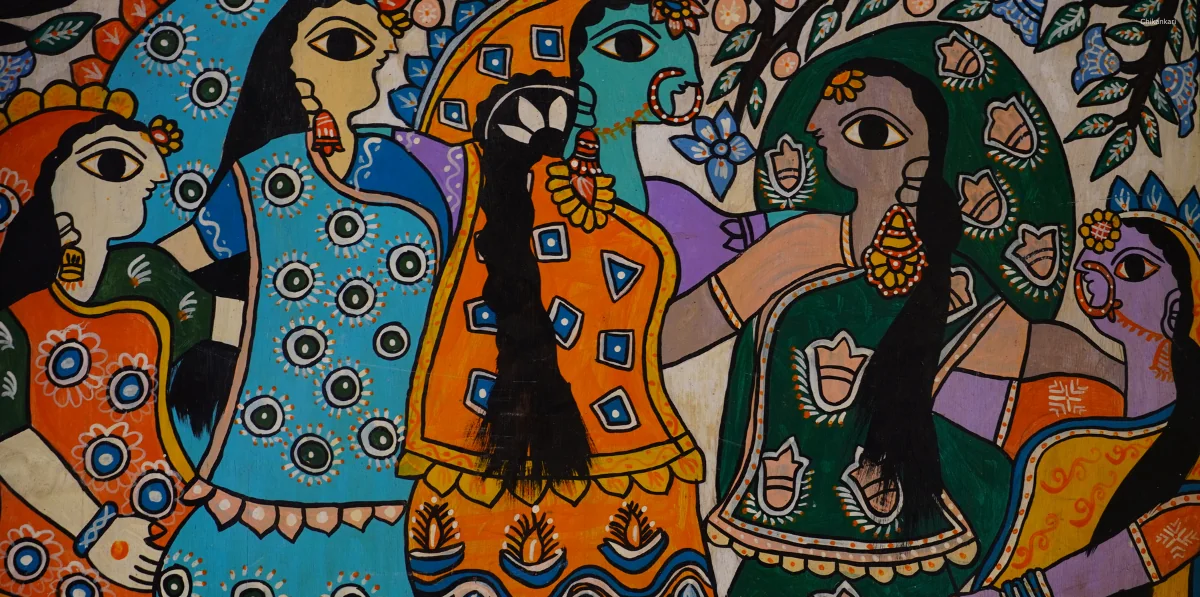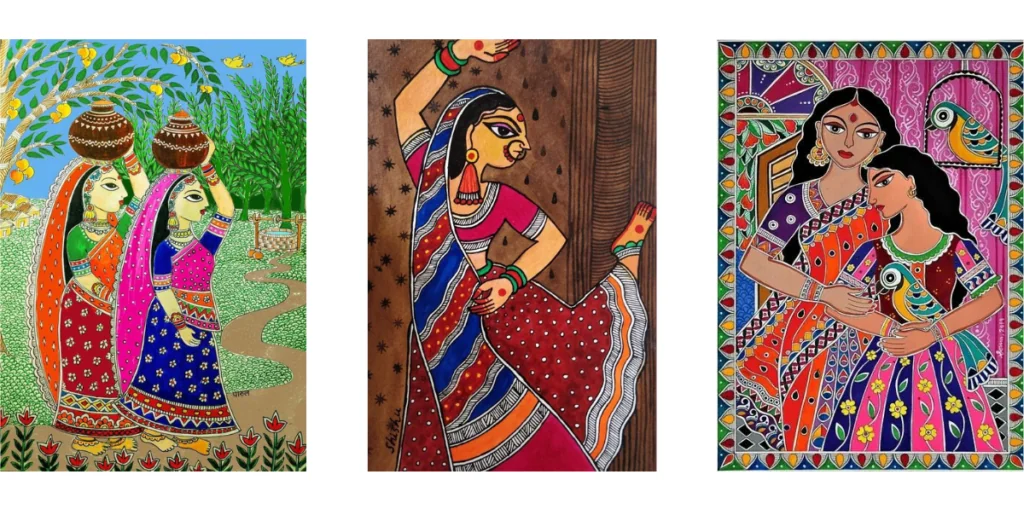
Blog
Madhubani Magic: The Timeless and Captivating Power of Mithila Art

Introduction
Madhubani painting, also known as Mithila painting, is one of the most famous forms of Indian folk art. Originally from the Mithila region of Bihar, this ancient art form has captured the hearts of art lovers and connoisseurs worldwide. Their beautiful patterns, beautiful colours and deep symbols make Madhubani paintings cultural treasures that tell stories of tradition, mythology and daily life.
The Historical Roots of Madhubani Painting
The origins of Madhubani painting can be traced back to the Ramayana period. It is believed that King Janaka, the ruler of Mithila, commissioned the artist to make these paintings to celebrate his daughter Sita’s wedding with Lord Rama. This tradition is passed down from generation to generation, allowing women especially to decorate the walls and floors of their homes with these beautiful designs on festivals, weddings and other occasions.
The Unique Style and Technique
One of the distinguishing features of Madhubani paintings is their unique style and technique. The artists use natural materials such as twigs, matchsticks and fingers to create beautiful designs and patterns. Colours are taken from natural substances such as turmeric, indigo, pollen and cow dung, giving the paintings an earthy tone.
These are characterised by bold outlines, usually done in black or charcoal. The process is full of bright colours carefully decorated with detailed patterns of dots, lines and geometric shapes. This technique creates beautiful images where all elements are carefully balanced to create harmony and balance.
Themes and Motifs
Madhubani paintings are rooted in the culture and spirituality of Mithila. It ranges from mythology to religious stories, from nature to daily life. Motifs often include depictions of Hindu deities such as Krishna, Rama, Durga and Lakshmi. Scenes from epics such as Ramayana and Mahabharata are also frequently depicted.
Nature is another an important theme in Madhubani art. Trees, flowers, birds and animals are depicted with great attention to detail and symbols. For example, the fish represents fertility and prosperity, while the lotus symbolises purity and divinity. These elements are not only decorative but also have cultural and spiritual significance.

The Symbolism and Cultural Significance
Every theme in Madhubani paintings has a symbolic meaning and reflects the beliefs and values of the Mithila community. The use of colour also has symbolism to it; for example, red represents power and passion, yellow represents knowledge and learning, green represents nature and fertility, and blue represents calmness and peace.
Madhubani’s paintings are not just art; they are a form of storytelling that captures the essence of Mithila culture and tradition. They act as visual documentation of the community’s memory, passing on its history, mythology and values to future generations.
The Evolution and Contemporary Relevance
Although Madhubani painting has a long history, it has evolved over time, adapting to changing cultural trends. Violent riots in Bihar in the 1960s led to a concerted effort to commercialise Madhubani art as a source of livelihood for local women. This initiative brought Madhubani paintings national and international recognition and appreciation.
Today, Madhubani art is not just limited to walls and floors; can be seen on canvas, fabric, paper and many other media. Contemporary artists are experimenting with new concepts and ideas, infusing modern sensibilities while remaining true to the traditional essence of the art form.
Prominent Madhubani Artists
The popularity of Madhubani painting led to many famous artists contributing to its preservation and promotion. These include Sita Devi, Ganga Devi and Baua Devi, whose works have been exhibited in prestigious galleries and exhibitions around the world. These artists played an important role in bringing Madhubani painting to its current state and encouraging new artists.
Madhubani Painting in Popular Culture
Madhubani paintings have transcended their traditional boundaries and influenced every aspect of popular culture. It has appeared in fashion, home decoration and even modern design. Clothes and accessories decorated with Madhubani patterns have become popular as they blend traditional art with modern styles. Interior designers incorporate Madhubani elements into home decoration to create spaces filled with rich culture and artistic flair.
The Role of Madhubani Painting in Empowering Women
Madhubani paintings played an important role in women empowerment in the Mithila region. Historically, women have mostly performed this art, which provides them with a source of self-expression and income. The commercialisation of Madhubani art has made many women financially independent, contributing to their well-being and upliftment.
Preserving and Promoting Madhubani Painting
Efforts to preserve and promote Madhubani paintings continue through various initiatives of government institutions, NGOs and artists. Seminars, exhibitions and training programs are planned to provide knowledge and appreciation of this art. Digital platforms and social media have also played an important role in reaching a global audience, ensuring that Madhubani paintings continue to thrive in today’s world.
Conclusion
Madhubani painting is more than an art form; It is a cultural heritage that embodies the spirit and tradition of the Mithila. Its design, colours and symbols make it a unique and attractive form of expression. While we celebrate the richness of Madhubani painting, we should also pay tribute to the resilience and creativity of the artists who have preserved this tradition over the years. Adorning the walls of modest homes or adorning prestigious museums, Madhubani’s paintings continue to bear witness to the beauty and cultural significance of Indian folk art.
Check out more amazing blogs at Souls of India.

